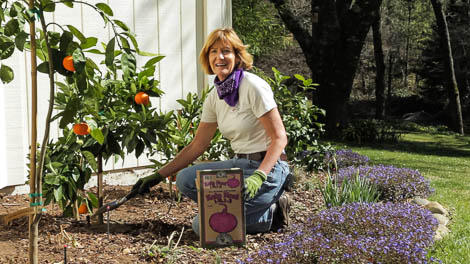Essential Nutrition For Your Organic Garden
Micronutrients are essential for your plants, says Tricia in our video about secondary macronutrients and the micronutrients. You know about the major nutrients, N-P-K. Those are the symbols for the building blocks: nitrogen, phosphorus and potassium. They're represented by the three numbers on the front of fertilizer boxes or bags.
For more about them, check out our video here. With the lesser known micronutrients (like “molybdenum” -- if you can spell that you can probably win a Spelling Bee) you’ll need a lab soil test to know if any need to be added to your soil.
Let’s have a quick look at the major mineral nutrients, and then get to know the micronutrients and find out what they do for your plants.
Mineral Nutrients -- Do You Know the Seconday Micronutrients?
Soil has varying amounts of minerals. When it rains, or we irrigate our gardens, the minerals dissolve, and the plant roots absorb the minerals. Our friends N-P-K are the primary macronutrients. Also important are the secondary macronutrients: Calcium builds cell walls. Add it via limestone powder, gypsum, oyster shell, or Kelzyme Calcium. Problems caused by low calcium include blossom end rot in tomatoes. Before you add calcium, check your soil pH in order to choose the best calcium source for your garden; oyster shell will raise the pH, but gypsum will lower pH.
Calcium builds cell walls. Add it via limestone powder, gypsum, oyster shell, or Kelzyme Calcium. Problems caused by low calcium include blossom end rot in tomatoes. Before you add calcium, check your soil pH in order to choose the best calcium source for your garden; oyster shell will raise the pH, but gypsum will lower pH.  Magnesium supports chlorophyll production. Add it via dolomite, Diamond K Brand KMS or Azomite.
Magnesium supports chlorophyll production. Add it via dolomite, Diamond K Brand KMS or Azomite.  Sulfur builds protein. Sulfur is released when “greens” like vegetable scraps and lawn cuttings decompose. Add it via gypsum, iron sulfate, and sulfur.
Sulfur builds protein. Sulfur is released when “greens” like vegetable scraps and lawn cuttings decompose. Add it via gypsum, iron sulfate, and sulfur.
Meet the Micronutrients
We say “micro” because plants need only small amounts of them. Sometimes they’re even called “trace elements”. They all have a role to play, though. Let’s find out what they are, what they do, and how you can add them to your soil.
- Boron is a boss (or regulator) of other nutrients. Plants need it for seeds and fruit. Add it via powdered boron.
- Copper helps plants reproduce and boosts metabolism in roots.
- Chloride is another aid to plant metabolism. Iron assists in producing chlorophyll.
- Manganese breaks down carbohydrates, cooperating with enzyme systems.
- Molybdenum (in addition to being hard to spell) aids nitrogen use by plants.
- Zinc helps change carbohydrates into sugars, and it’s in plant growth enzymes too. Add it via zinc oxide, zinc sulfate, and zinc chelate.
How Do I Supplement for Micronutrients?
 Want a supplement for the plants growing in your garden? One that contains many of these micronutrients? Try kelp, glacial rock dust, Azomite or (for fastest results) liquid kelp. Now that you know the basics of secondary macronutrients and the micronutrients, go get a lab test on your soil. Once you have the results, use organic fertilizers to add what you lack -- and you’ll be on your way to a garden full of healthy vegetables and bountiful harvests.
Want a supplement for the plants growing in your garden? One that contains many of these micronutrients? Try kelp, glacial rock dust, Azomite or (for fastest results) liquid kelp. Now that you know the basics of secondary macronutrients and the micronutrients, go get a lab test on your soil. Once you have the results, use organic fertilizers to add what you lack -- and you’ll be on your way to a garden full of healthy vegetables and bountiful harvests.
For more information about nutrients and organic fertilizers, read the Fertilizer Solutions Chart that can be download as a PDF here.
Secondary macronutrients and the micronutrients are small but essential building blocks for the plants in your organic garden!


3 comments
What about iron?
Kenny, some labels will list percentages for things like calcium, sulfur, sometime magnesium. You can find it on the product label, it the percentage is high enough.
I’m looking for a list of percentages of secondary macronutrients that are available in common organic soil amendments. Any ideas where I could find that? Thanks.